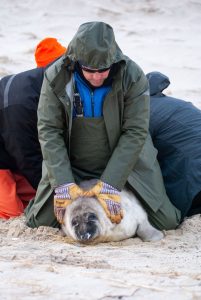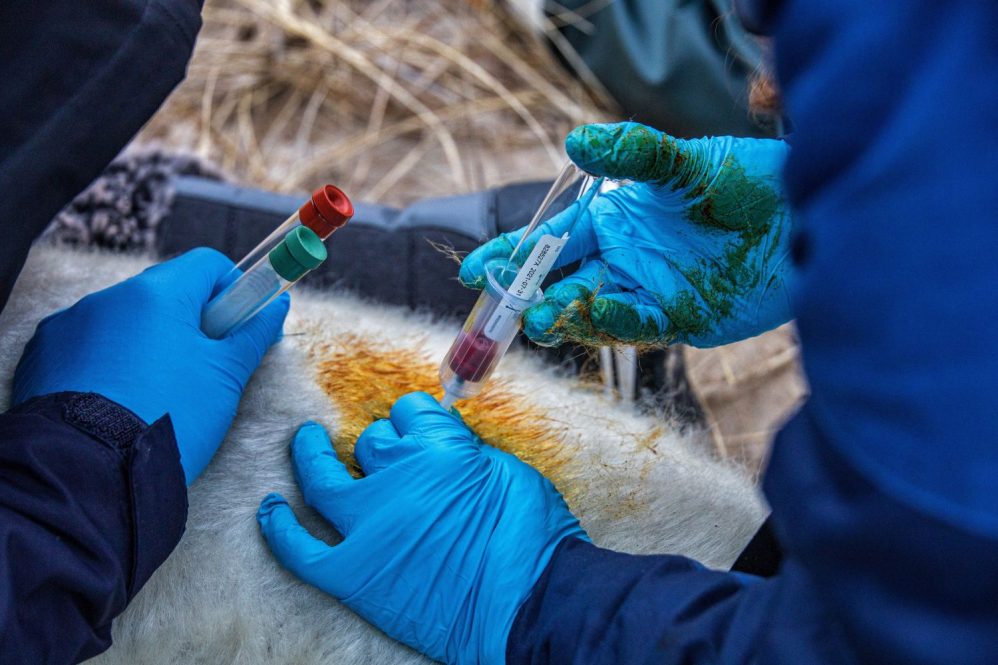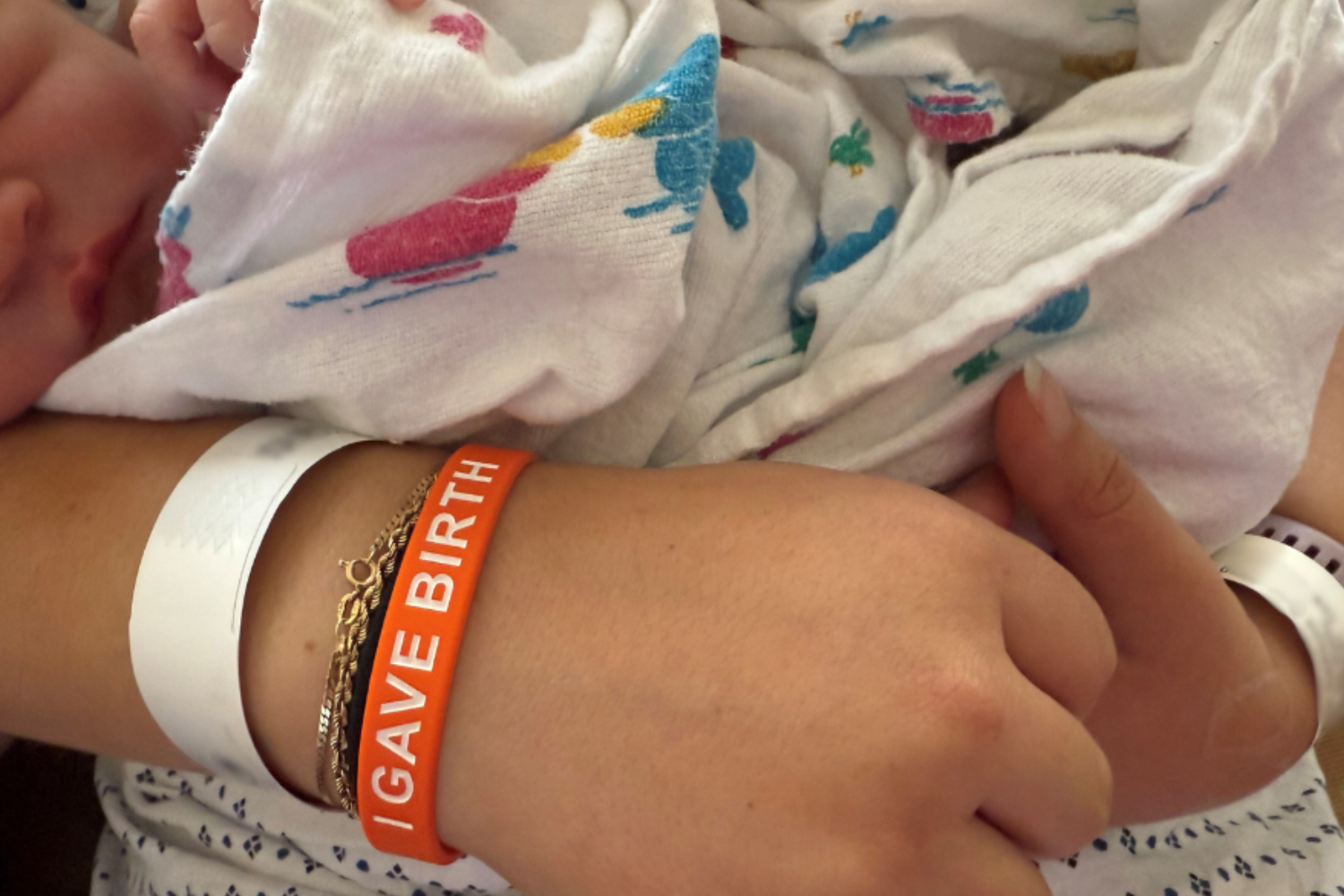Something strange happens when two kinds of seals living in the waters around Cape Cod get infected with influenza – harbor seals get sick but gray seals don’t.
Scientists know that both gray seals and harbor seals can contract influenza. But, generally, only harbor seals get sick and may die from the virus.
This perplexing phenomenon led Milton Levin ‘04 Ph.D., associate research professor of pathobiology and veterinary science in the College of Agriculture, Health and Natural Resources (CAHNR), and his collaborators to investigate if a difference in a piece of the immune system called cytokines could be responsible for this difference.
“That’s the big question we’re trying to understand – why is there a difference in the response in two different species that occupy the same space; why is one susceptible to the disease?” Levin says.

Cytokines are a type of small protein produced by immune cells that work on other immune cells. They play a critical role in coordinating the body’s immune and inflammatory responses.
“They help initiate an immune response and then they help tamp down the immune response once a threat is gone,” Levin says.
Surprisingly, the team found no difference between the cytokine profiles in the gray seal pups that had contracted influenza and those that didn’t. These findings were published in Journal of Wildlife Diseases.
This indicates that the gray seals’ immune systems are not responding to the presence of the virus, or that the virus tamps down the immune response so much the scientists couldn’t detect it.
“Right now, it seems that the seals are not responding at all to influenza, and that’s probably why we’re not seeing clinical signs and why they don’t die,” Levin says.
This is not only a departure from what the researchers expected to see, but from research in many other kinds of animals. Other studies have found clear differences in the cytokine profiles of animals infected with a virus versus those that were not.
Levin and his team collected blood samples from over 100 gray seal pups. In the lab, they used a commercially available kit to measure the presence or absence, and concentration of 13 different cytokines. The kit was originally designed for canines, but Levin’s previous research established its efficacy for seals since the two groups are evolutionarily related.
Levin suggests the lack of cytokine response could be a protective mechanism that prevents the gray seals from getting sick. In humans, sometimes when we encounter a pathogen the body mounts a “cytokine storm,” an unregulated response where the immune system is just firing on all cylinders. This kind of response causes more damage than the pathogen the body is trying to fight.
“If we can understand why gray seals don’t generate that response, that could tell us more about the immune response in general in marine mammals versus other species,” Levin says.
The next step of this research is to measure cytokines in harbor seals. However, collecting samples from harbor seal pups will be a challenge. Gray seals separate from their mothers after just a few weeks and stay on the beach where researchers have easy access to them. Harbor seals, however, stay with their mothers for four to six weeks; and grown seals are much too large for researchers to handle safely.
The overarching goal of the research Levin and his collaborators have been conducting for over a decade is to understand how viruses circulate in marine populations and what makes an animal more or less susceptible to illness and death from these infections.
“We’re trying to understand how pathogens, viruses, and influenza in particular, are being passed between species and if it is being transmitted to humans or are humans transmitting it to seals,” Levin says.
This work was a collaboration between UConn, Tufts University Cummings School of Veterinary Medicine, the University of Maine, and the National Oceanic and Atmospheric Administration Northeast Fisheries Science Center. The lead author was Christina McCosker from the University of Maine.
This work relates to CAHNR’s Strategic Vision area focused on Fostering Sustainable Landscapes at the Urban-Rural Interface. All photos collected under NMFS permit #21719-01 and USFWS permit #53514-20-1.
Follow UConn CAHNR on social media



